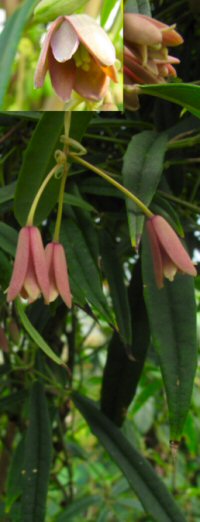 |
Bearing in spring an abundance of separate male (flared buttermilk-yellow) & female (plump, bronzy), highly scented flowers followed by white-purple sausage-shaped edible fruit.
Holboellia latifolia var. angustifolia WJC13784 A seed collection from our second encounter with this possible new species, which the current world authority dissagrees with our current naming. Found growing on our 2013 expedition at 2,200m, where this collection was scrambling over a large shrub, luckily bearing long slender purplish fruit. It will have male flowers a bronzy pink in colour on their exterior, greenish yellow interior, with the tips of the sepals recurving. The larger female flowers similar bronzy pink colour, both in and out, recurving at the tips.
|